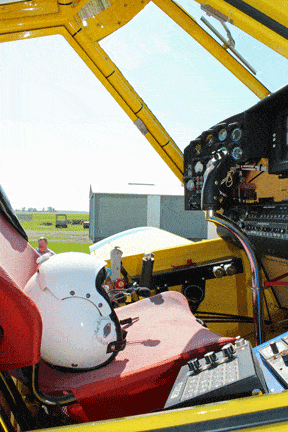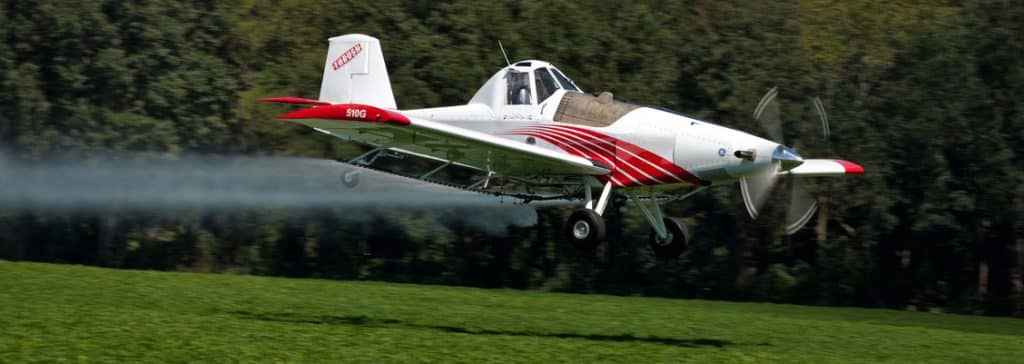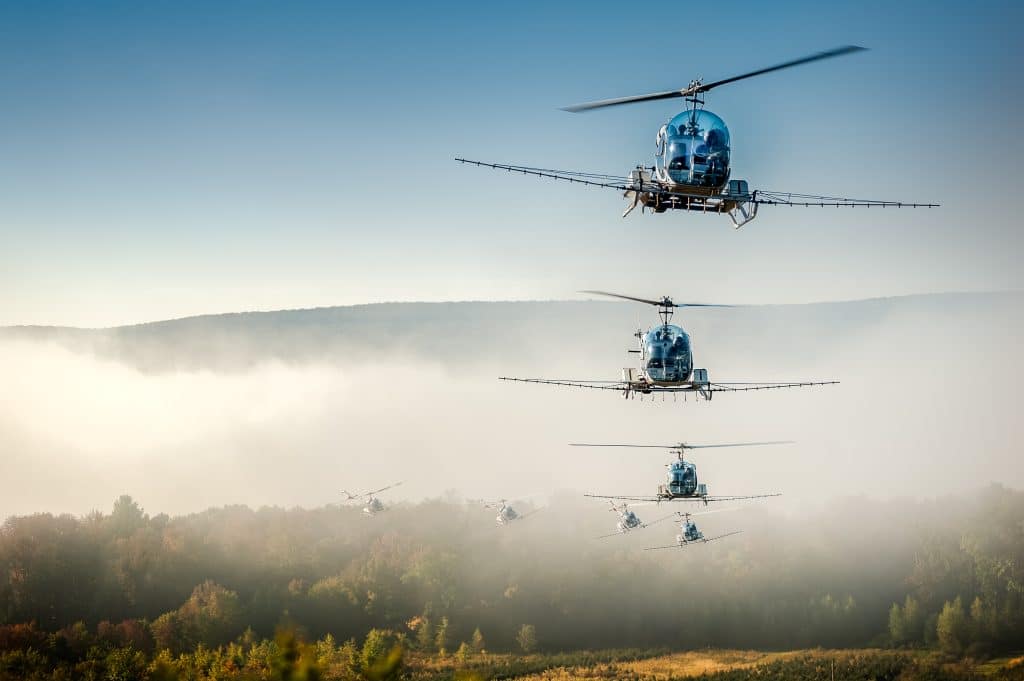Where are you in your Career?
Whether you are looking for your first seat or are a veteran aerial applicator, NAAA can help you connect with the people and resources needed to make your next career move.

Being an ag pilot is one of the most exciting jobs in aviation. It requires tremendous skill and attention to detail. Those who make the cut will find a rewarding career with opportunities and experiences which exist in nowhere else in aviation.
If you are actively seeking a career in ag aviation, you’re in the right place. It takes a significant amount of training and education to become an ag pilot. Beyond the formal acquisition of required certificates and licenses, it is imperative to conduct extensive practical on-the-job training to become a safe and effective aerial applicator. Mentorship, wherein an experienced pilot or operator guides you in the acquisition of experience, both in and outside of the cockpit, is an immensely beneficial tool. As an aspiring ag pilot, your first mentor will most likely be your employer. Finding the right mentor is no easy feat; the right mentor for you may not be the right mentor for others. Know also that an operator must take on a significant financial risk in bringing you on as a prospective pilot. Because of this and the significant on-the-job training needed, your first few years as an ag-pilot-in-training may not involve much flying. You may be mixing loads, fueling and performing aircraft maintenance as you learn the trade and prove your potential. Do not get discouraged in this; the experience you gain on the ground is critical to your safety and success when you get behind the controls to spray/spread your first revenue-generating load.
Aspiring Ag Pilot Checklist:
- Find a mentor – Join NAAA to find contact info for operators and pilots in your area with our Online Directory. You can also use the Job Board to register as a pilot looking for work or find operations actively seeking applicants. A hungry, but humble, attitude will go a long way to getting your foot in the door. Plan on spending a few seasons working on the ground as you work your way into a seat.
- Earn your Commercial Pilot Certificate – Consult with your mentor on how you will receive this training. You will also need a tailwheel endorsement. There are several Ag Flight Schools which can be a good option whether you are a current Private Pilot or are starting from scratch.
- Earn your Pesticide Applicator License – While you won’t need this until you get your first seat, obtaining it early will show potential employers you are capable and committed to this career path. Consult your state Department of Ag to learn how to become a licensed aerial applicator.
- Attend the Ag Aviation Expo – This annual convention for the aerial application industry will expose you to operators from across the country, and includes special sessions for new and aspiring ag pilots such as Compaass Rose and the “Ask the Expert” Speed Mentoring session. Check out the details for this year’s Ag Aviation Expo.
- Attend your State Ag Aviation Convention – Many states/regions host their own ag aviation conventions which area a chance to network with operators and pilots in your area. Many of these also offer the PAASS Program, which is the industry’s premier safety education program for aerial applicators.
- Apply for a Scholarship – NAAA’s Ag Wings of Tomorrow Scholarship Program can help defray the costs for flight training (whether at a flight school or NAAA-operator-sponsored apprentice program) or aviation/ag-related vocational program. In addition other scholarships are available.
Whether you are on your 2nd season or 32nd, continuing education and professional development can continue paving the path of a safe and rewarding career. Take advantage of all the opportunities afforded and don’t leave anything on the table. As you gain experience and wisdom, consider how you can share that with others to grow the next crop of professional aerial applicators.

Current Ag Pilot / Operator – Annual Checklist:
- Attend PAASS – The Professional Aerial Applicator Support System (PAASS) is a yearly education program like no other. Created by and given by ag pilots, it is a fresh yearly program covering key safety and drift mitigation issues specific to flying. It is offered at many state/regional conventions.
- Participate in Operation SAFE – Evaluating the spray/spread pattern of an ag aircraft is critical to ensuring it will apply accurately in the field. Operation SAFE matches applicators with the experts and tools required to quantify characteristics such as uniformity, effective swath width and droplet size. NAAREF recommends participation in Operation SAFE every other year or when you make major changes to your application setup.
- Become a Certified-Professional Aerial Applicator Safety Steward (C-PAASS) – Demonstrate to your customers, regulators and insurer that you are striving for the highest level of safety and seeking out the best continuing education available by applying for annual C-PAASS certification.
- Attend the Ag Aviation Expo – This annual convention for the aerial application industry provides a wealth of safety and education sessions, interaction with allied-industry exhibitors and fellowship with other aerial applicators. Check out the details for this year’s Ag Aviation Expo.
- Get involved with NAAA and your State/Regional Association – In this relatively small industry, every voice counts and yours is needed to help shape the future of the aerial application industry in the US. Joining and becoming active in NAAA, as well as your state/regional association, can be an incredibly rewarding experience and more membership involvement is always welcome. See why we’re better together.
Agricultural Aircraft Operators are the backbone of the aerial application industry. These business owners have bases of operation across the country, collectively employing thousands of pilots. Many are also pilots themselves. If you are considering becoming an Operator, NAAA is ready to be your ally in making your dream a reality.

These resources will help propel you toward becoming an FAA-certificated Part 137 Agricultural Aircraft Operator.
These operating guidelines are designed to assist our members in establishing
a model of operation that will assist in providing superior crop protection services, promote safety among the members and enhance the image of the aerial application industry and its members.
The Agricultural Airman Guidelines (AAG) are intended primarily to be a resource to assist operators, supervisors, pilots and FAA personnel when preparing for, or administering, a 14 CFR §137.19(e) Knowledge and Skills Test or Endorsement (Letter of Competency). Secondarily, and more generally, they serve as consistent safety education and training guidance for agricultural aviation operators and pilots whether it be for an initial evaluation of their knowledge and skills or a training review.
A national pesticide applicator certification study guide for aerial applicators. Revised 2014. Many state pesticide regulatory agencies have adopted the National Aerial Pesticide Applicator Pilot Certification Examination as their tool for pilot certification; this is the accompanying preparatory/study guide.
The process of applying for a Part 137 operating certificate can be daunting to those who have never been through it. This guide is intended to simplify the process and help prospective operators understand what will be required of them throughout it.
This advisory circular (AC) describes the means for an agricultural aircraft operator to apply for an Agricultural Aircraft Operator Certificate under Title 14 of the Code of Federal Regulations (14 CFR) Part 137. The AC also addresses safety practices for agricultural aircraft operators.
14 CFR Part 137 – Agricultural Aircraft Operations – describes the federal rules governing (1) Agricultural aircraft operations within the United States and (2) The issue of commercial and private agricultural aircraft operator certificates for those operations.
Fly-By Farming: Combining expert skill with new technology allows for precision aerial application (Virginia Living, October 2020)
As a specialist in aerial application (or “crop dusting,” as lay people call it), Matt Crabbe of Crabbe Aviation in Mechanicsville, VA has spent decades of his life taking in a bird’s eye view of the state’s agriculture. If you’re imagining an old-fashioned open cockpit plane with a goggles-clad aviator at the controls, however, the reality is considerably more 21st century. Read more
Unlike Their Airline Peers, Some Pilots Who’ve Taken The Route Less Traveled Are In Demand (Forbes, Nov. 5, 2020)
Scott Palmer is a crop duster, or aerial applicator, as the industry calls it. He flies for a small company in Pullman, WA, called Inland Crop Care and, like other ag pilots, he’s seen no drop in business since the pandemic hit. Read more
Sims’ Time (Agricultural Aviation, Summer 2020)
Flight simulators designed specifically for agricultural aviation offer ag pilots an added training dimension. Read more
The Importance of Mentoring (Agricultural Aviation, Fall 2019)
To refortify agriculture’s Air Force as baby boomers retire, more mentoring is a must. Read more
Mentor-Mentee Do’s and Dont’s (Agricultural Aviation, Fall 2019)
Whether you are mentoring a new ag pilot or being mentored as one, adhering to these do’s and dont’s will lead to a smother mentoring experience. Read more
How to Transition Safely into Different Ag Aircraft (Agricultural Aviation, Fall 2019)
It seems that today’s aerial applicator feels that the pinnacle of the profession is getting into the biggest and/or fastest airplane available. Well, new ag pilots have a lot to learn about their new profession outside of just handling the aircraft, and a proper outlook is not to rush the process. Read more
The Golden Boys (Agricultural Aviation, Fall 2019)
These seasoned agricultural aviators have gotten better with age. Read more
Mentoring Ag Pilots from the Ground Up (Agricultural Aviation, Fall 2018)
Breaking into the aerial spraying business is no easy feat. Most people with no connections to the industry are drawn to ag flight schools to gain the skills and the opportunity to find their first seat. Schooling and education are only a small part of becoming a safe and successful ag pilot. The unique thing about aerial applicators is you don’t need a college degree or even a piece of paper saying you completed an ag flight school to become an aerial applicator. In many cases you may be better off finding an operator that is looking for a future pilot and working with them to possibly become your mentor. This mentor may train you in house or they may even help send you to a school that meets their standards. Read more
Flight Training: Different Schools of Thought (Agricultural Aviation, Spring 2018)
Agricultural Aviation gets the low-down seven schools and eight training options for current and future ag pilots. Read more
Agricultural Aviation’s Bright Future (Agricultural Aviation, Spring 2017)
A renowned forecaster and corporate strategist considers the long-term outlook of the agricultural aviation industry over the next 50 years and likes what he sees. Read more

